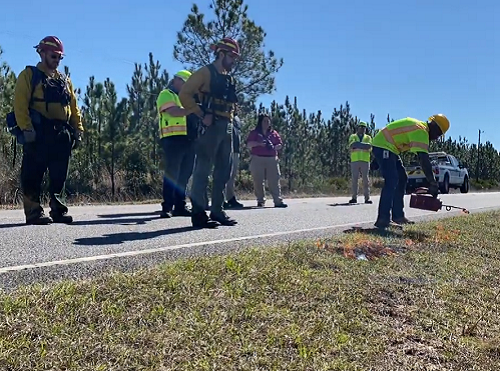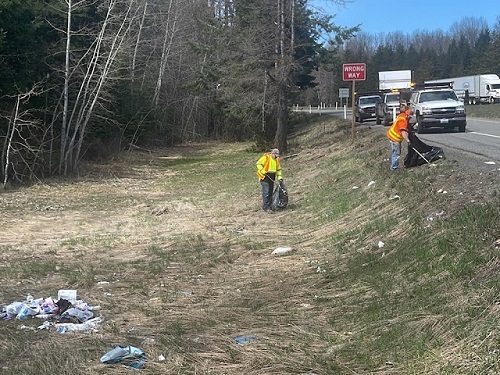A recent video posted by the Georgia Department of Transportation details how the agency is helping “rejuvenate” a rare species of vegetation commonly known as the “Pitcher Plant” along State Route 177 on the way to Okefenokee Swamp Park by using “prescribed burns.”
[Above photo by Georgia DOT]
The closely monitored burn occurred in 2022 during the winter on roadside right-of-way and mimics nature’s own cycle of rejuvenation. It’s also the first time Georgia DOT has used a prescribed burn to manage vegetation in this way.
The agency noted that such prescribed burns are conducted under strict safety regulations and in partnership with the Georgia Forestry Commission and the Georgia Department of Natural Resources.
The Georgia DOT added in a blog post that the Okefenokee National Wildlife Refuge in Southeast Georgia is a vast, mysterious wilderness of bogs, forests and swampy prairies, home to wild species that evoke fauna and flora of primeval times. Rare carnivorous plants like the Sarracenia, or “Pitcher Plant,” entrap insects and use digestive enzymes to dissolve prey.
[Editor’s note: A 2021 episode of the Environmental Technical Assistance Program or ETAP Podcast featured Matthew Quirey – a landscape design and research fellow with The Ray – discussing how roadside landscapes, more often termed the “right-of-way,” are now being viewed as “habitat assets” instead of maintenance burdens among state departments of transportation.]
Okefenokee – a 438,000-acre wetland that is the largest blackwater wetland in North America – draws around 100,000 visitors from around the globe each year.
To reach its entrance, visitors must travel along a four-mile stretch of SR 177 that is becoming a Georgia DOT living laboratory for innovative vegetative management practices designed to protect plants in the environmentally sensitive area while simultaneously ensuring public safety.
The agency has been involved in a number of plant and pollinator support efforts in recent years.
For example, in 2021, Georgia DOT the Georgia Association of Conservation Districts or GACD installed 15 pollinator habitat sites in designated locations as part of a joint effort to educate state residents about the important role “pollinators” such as bees, butterflies, and other insects play in Georgia’s agricultural sector.



